Monty Python And The Holy Grail
Submission 9,061
Part of a series on Monty Python. [View Related Entries]
Monty Python And The Holy Grail
Part of a series on Monty Python. [View Related Entries]
[View Related Sub-entries]
This submission is currently being researched & evaluated!
You can help confirm this entry by contributing facts, media, and other evidence of notability and mutation.
| Navigation |
| About • History • Online Presence • Related Memes • Search Interest • External References • Recent Images • Recent Videos |
About
Monty Python and The Holy Grail is a British comedy film produced in 1975 surrounding the Arthurian legend and the Knights of the Round Table on their quest for the Holy Grail. The movie was written and performed by the Monty Python comedy group (Graham Chapman, John Cleese, Terry Gilliam, Eric Idle, Terry Jones and Michael Palin) and directed by Gilliam and Jones. Set in 10th century England, the plot follows King Arthur as he travels the country in search of knights to join his Round Table in Camelot until God sends them on a quest to find the Grail that ends up failing disastrously in hilarious fashion.
History
Before The Holy Grail, the Monty Python troupe had only released one film, And Now for Something Completely Different, back in 1971. Unlike the former, the group’s first foray into film wasn’t a standalone plot, but instead 90 minutes of sketches taken from the first two seasons of the television show and recreated without an audience[1]. The intention was to produce a compilation of their works for the American audience that hadn’t seen the original series.
The concept for Monty Python and the Holy Grail began during the hiatus between the third and fourth seasons of the BBC TV series Monty Python's Flying Circus. Between 1973 and 1974, the Pythons developed the first version of the screenplay and initially planned for half the movie to be set in the Middle Ages while the other half was set in present day. Ultimately they decided to solely focus on the Middle Ages concerning the legend of King Arthur and the quest for the Holy Grail.
Initially, the budget for this film was around £200,000 or $260,742 (which is around $1,256,407 in 2020) and was raised by a group of investors, including Pink Floyd, Led Zeppelin, Elton John and Genesis, who were persuaded by head of Charisma Records, Tony Stratton-Smith, after studios refused to finance it.

Eventually by the fifth edition of the screenplay, the troupe had completed the storyline and the BBC visited the set in May 1974 when production began (as documented by Michael Palin in his book Diaries 1969–1979: The Python Years[2]). The two Pythons who directed the film (Gilliam and Jones) had never done so before the Holy Grail and the cast described their directing as “employing the level of mutual disrespect always found in Monty Python's work.”
The vast majority of the film was shot in Scotland[3] near the Doune Castle, Glen Coe and Castle Stalker. Many of the castles seen in the movie are actually various shots of Doune Castle from different angles in addition to hanging miniatures. Certain scenes also include Kidwelly Castle in South Wales, Bodiam Castle in East Sussex and Mount Buffalo National Park in Victoria, Australia.
The famous scene depicting the knights and Merlin fighting the Rabbit of Caerbannog did indeed use a real rabbit during filming. According to commentary[4] released in the 2001 version of the film, the rabbit was covered in red liquid to simulate the blood (which was hard to remove), but the owner didn’t want their pet to get dirty, so was kept unaware. The scenes where the rabbit attacked the knights was done with puppetry.

Ultimately, the film was a massive success after its release on May 25th, 1975, and, grossed more than any British film exhibited in the United States, where it was also chosen as the “second best comedy of all-time” in the ABC special Best in Film: The Greatest Movies of Our Time. Throughout its extensive lifetime, Monty Python and the Holy Grail would continue garnering fans across all generations and is consistently listed on compilations of the greatest comedies and films of all-time.
Online Presence
Given the age and generation-spanning love of Monty Python and The Holy Grail, the film has had an immense online presence for decades through tons of channels like quotes, fan pages, art and even a few prominent memes.
On Facebook[5], the Monty Python & the Holy Grail page has nearly 1 million likes and followers in addition to numerous fan pages and spinoffs dedicated to quotes and other components of the film.
The Instagram[6] hashtag #montypythonandtheholygrail has over 30,000 posts featuring favorite scenes, memes, tattoos, fan art and more.
Twitter users have continued to use the hashtag #montypythonandtheholygrail for several years, even relating the movie to current events, as seen in this tweet[7] from user @Ravagiing.
I swear watching the demonicrats in this impeachment is like watching
monty python and the holy grail— ☤𝓢𝒌𝓪𝓲☤ (@Ravagiing) January 31, 2020
On Reddit in particular, various memes featuring scenes from the film have cropped up numerous times over the years, even spawning the creation of a subreddit[8] (r/HolyGrailMemes) dedicated to them. The sub has over 14,000 members as of February 2020, with an active community of memers posting each day. One of the central themes the sub creates memes around is using footage from the 1975 film and relating it to current entertainment. One example of this was uploaded by Redditor Harvikfan4Life on November 28th, 2019 (seen below).

Outside memes, the film is a popular choice to reference on r/todayilearned and r/MovieDetails where Redditors point out relatively unknown facts and trivia from The Holy Grail. Many examples of such posts have received tens of thousands of upvotes and even made it to the Front Page of Reddit[9] on occasion, further adding to the film’s fan base.
Related Memes
Though there’s been lots of memes birthed from Monty Python sketches and films over the years, three in particular come from The Holy Grail specifically.
Just A Flesh Wound
Just a flesh wound (also "'tis but a scratch") is a line said by the Monty Python and the Holy Grail character, the Black Knight, upon having his arms chopped off by King Arthur. According to Cleese, this scene is a polemic against the saying that "if you never give up, you can't possibly lose.” The phrase is often used when one denies their opponent's advantage or downplays received damage. It often has an ironic meaning, like in the sketch, and is used when someone is obviously losing bad or was heavily hurt.

'Tis A Silly Place
Tis a Silly Place is a memorable quote uttered by the character King Arthur (played by Graham Chapman) in the film comedy Monty Python and the Holy Grail. Online, people use the quote in videos, reactions and image macros as a punchline to a person, place or thing's behavior.

Who are You, Who are so Wise in the Ways of Science?
Who are You, Who are so Wise in the Ways of Science? is a quote said by Sir Bedivere (played by Terry Jones) to King Arthur (played by Graham Chapman) in the British comedy film Monty Python and the Holy Grail. The quote is used alongside a still from the scene as a reaction image to an above caption or image to express sarcasm about their intellect and knowledge.

Alright, We'll Call It A Draw
Alright, We'll Call It A Draw is a memorable quote uttered by The Black Knight (played by John Cleese) to King Arthur (played by Graham Chapman) from the 1975 British comedy film Monty Python and the Holy Grail. The quote is used alongside a still from the scene as a reaction image to an above caption or screenshot, typically to show when someone or something is clearly beaten but doesn’t admit defeat. It can also be used without the image as a standalone catchphrase and sometimes as an object labeling meme.

Help! Help! I'm Being Repressed
Help! Help! I'm Being Repressed is a memorable quote uttered by the peasant Dennis (played by Michael Palin) to King Arthur (played by Graham Chapman) from the 1975 British comedy film Monty Python and The Holy Grail. The quote is used alongside a still from the scene as a reaction image or GIF to an above caption or screenshot, typically to show when someone or something is being oppressed or subjugated by another party. The reaction is most often used sarcastically to poke fun at the person claiming to be “repressed.” It can also be used without the image as a standalone catchphrase and sometimes as an object labeling or photoshopped meme.
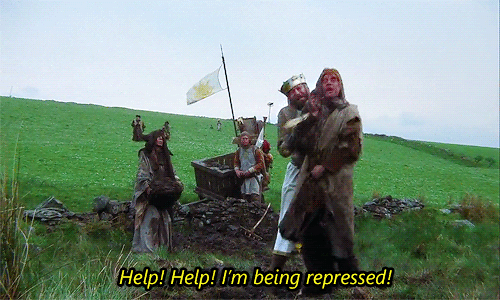
A Blessing From The Lord!
A Blessing From The Lord! is a memorable quote spoken by Sir Luancelot The Brave (played by John Cleese) at 24:50 in the film in response to God tasking King Arthur with the quest for the Holy Grail. The quote is used alongside a still from the scene as a reaction image to an above caption or screenshot, typically to represent the feeling of gratitude projected by the top property. The reaction is often used sarcastically, and occasionally used on its own as a reaction in post comments.

Search Interest
External References
[1] Wikipedia – And Now for Something Completely Different
[2] Wikipedia – Diaries 1969–1979: The Python Years
[3] Movie Locations- Monty Python And The Holy Grail
[4] DVD Journal – Holy Grail: Extraordinarily Deluxe Edition
[5] Facebook – Monty Python & The Holy Grail
[6] Instagram – #montypythonandtheholygrail
[7] Twitter – @ravagiing
[8] Reddit – r/HolyGrailMemes
[9] Reddit – Monty Python And The Holy Grail
Recent Videos 294 total
Recent Images 34 total
Share Pin
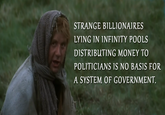

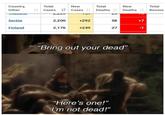

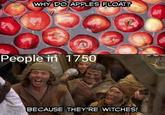










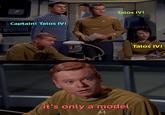

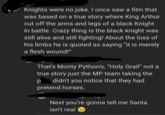
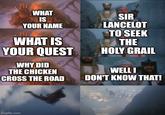



Comments ( 0 )
Sorry, but you must activate your account to post a comment.
Please check your email for your activation code.